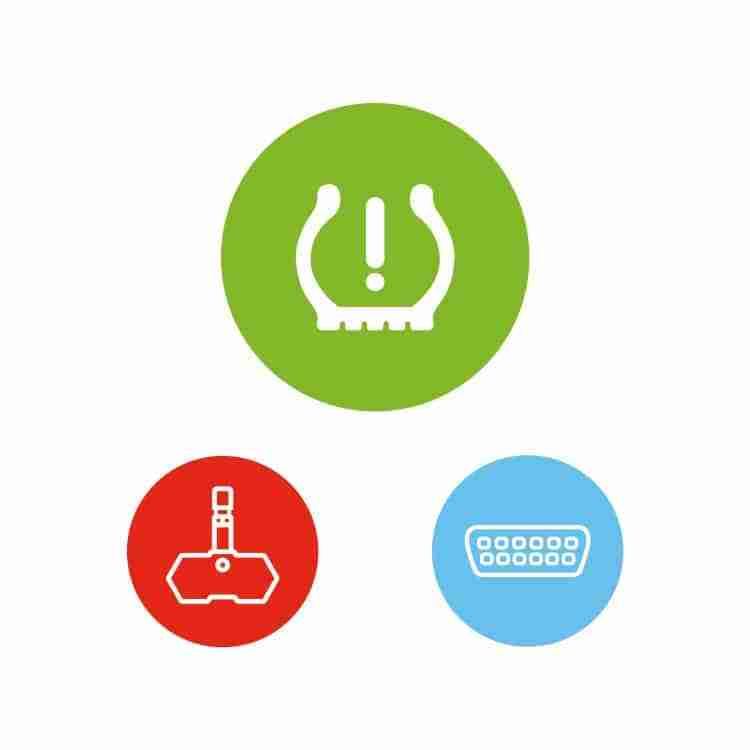Low Tire Pressure Light but Tires are Fine – What you need to know

So, you are driving from work, school, or wherever while enjoying your favorite playlist, then suddenly, your tire pressure light goes on. Logically, you find a safe spot and pull over so that you can check the tires. But on stopping, you realize that the tires are okay.
If you’ve not experienced the same before, you might be confused about your next step of action. Should you change the tires, or continue with your drive?
This post will look at what can lead to having your low tire pressure light turn on, while the tires are just fine. But before we delve into the specifics, it is essential to understand how tire pressure is measured automatically.
What helps to measure tire pressure?
Tire pressure in modern cars is measured using a Tire Pressure Monitoring System (TPMS). The TPMS is an electric box that’s installed on the rim of the tire. Depending on the technology used, the TPMS can directly or indirectly measure the air pressure and trigger the pressure light on your car’s dashboard when the pressure levels are low.
However, there are some instances where the system can trigger the light to turn on even when there is no tires issue.
Why won’t my tire pressure light go off?
There are several reasons why your tire pressure light would refuse to go off, yet your tires are okay. Some of them include;
i. A faulty TPMS system
The technology used to build the Tire Pressure Monitoring System is not immune to damage. Often, the sensors have a limited lifespan and tend to malfunction as they age.
However, even if the TPMS in your tires is wearing, it is not safe to assume the light when it turns on. Check the tire immediately, the light goes on, and have a mechanic repair the monitoring system if everything is fine.
How do I know if my tire pressure sensor is bad?
You can always know that your TPMS sensors are faulty if you keep getting false alarms on the state of your tire pressure. The opposite also holds some truth. If the light fails to turn on when you are sure that your tire is under-inflated, then your sensors are faulty.
ii. Installing new rims without TPMS sensors
Most people don’t know this, but new rims don’t come with TPMS sensors installed. You are required to install the sensors separately for the system to function correctly. Otherwise, the TPMS light will remain illuminated on your dashboard even if the tire is perfectly fine.
iii. Change in surrounding temperatures
It is important to note that the pressure in a tire varies with temperature. When it is warm, the pressure increases. On the other hand, cold temperatures will lead to a decrease in tire pressure.
For this reason, your TPMS light is likely to turn on in extremely cold conditions.
If this is the case, drive your car for some minutes to warm up to increase the pressure inside the tires. This should switch off the light.
iv. Low pressure in the spare tire
Some spare tires also come with TPMS sensors installed. In most cases, most people forget to check the pressure levels in the spare tire. As a result, the sensors will send a signal that illuminates the TPMS light on your dashboard when the pressure level drops significantly. To avoid this, always ensure that you check and adjust your spare tire(s) pressure accordingly.
Is it safe to drive with low tire pressure light on?
Well, there is no YES, or NO answer to this question. It will depend on some factors.
Once the TPMS light goes on, the first thing you should do is check the pressure levels in the tire.
If the pressure level is okay, then determine what caused the light to turn on. If the cause is out of your control, like extreme coldness, then you can safely continue with your journey.
However, if the light goes on due to a faulty TPMS system, you should seek professional help even if the tire pressure levels are okay.
Why is this necessary?
Your tires may be okay at that specific point, but what happens when the pressure levels reduce? You may assume and blame it on the TPMS faultiness while there is an actual problem with your tires.
Unfortunately, driving with a deflated tire can cause more harm. Some of the possible outcomes of driving with an under-inflated tire include:
- Tire failure and wear
- Poor tire traction as the treading loosens with increased friction with the road
- Slower tire response time, which is dangerous
- Increased fuel costs
How do you reset the tire pressure light?
If you are sure that your tires are okay and the TPMS light refuses to go off, you can always reset the TMPS light.
It is important to point out that the reset mechanism is not the same in all cars. While some can easily be reset using the reset button found under the steering wheel, others may require a little bit of technical know-how to reset. But do not fret. You can always look it up on the manual.
Once you’ve found the button, switch the start key to ‘ON’ without starting the car’s engine. Once you’ve done this, press on the button until the flickering stops. You can now release the reset button and proceed with your drive for about 30 minutes to complete the reset process.
An easier way to reset the light is by disconnecting the car battery. You are guaranteed that this will work, but it has its drawback – it will also reset other electronic systems in your car.
Maintenance tips to prevent sudden lighting of the TPMS light
As a driver or car owner, there are measures that you can follow to prevent the low tire pressure light from coming on when the tires are in good condition.
First and foremost, always check the tire pressure. You can do this on a weekly basis or every time you take your car for a wash. Also, you can also check the pressure levels before setting out for a long drive.
Second, when changing tires, always ensure that you have the TPMS sensors installed on the new wheel. It is safe to ensure that you only let the professionals take care of changing your car’s wheels to avoid any mistakes.
Note: it is only safe to let professionals handle the tires of your vehicle. This prevents possible damage to the sensors or the tires themselves.
Final take
If you are still reading this, I believe that you’ve gained valuable knowledge on why your low tire pressure light would illuminate while the tires are okay. This can be frustrating, but with the information herein, you will be able to resolve the situation as is required.













No Comment